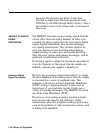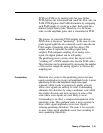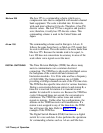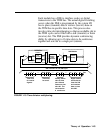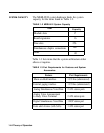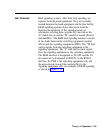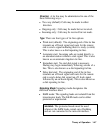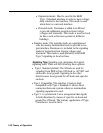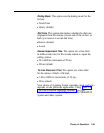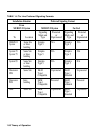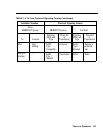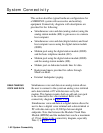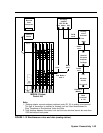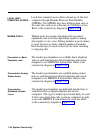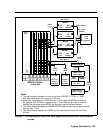
●
Unprotected mode: Must be used for the E&M
Type 1 Standard interface in order to meet voltage
drop criteria for the interface. This mode is used
when there is a network interface.
●
Protected mode: Resistance is added in tie M lead
to provide additional protection from foreign
voltages and transients. This mode is used on local
tie lines, such as between systems in different
buildings.
●
Simplex mode: The signaling leads are superimposed
onto the analog transmission leads to provide a two-
pair interface. Resistance is included in the signaling
leads for protection from foreign voltages and
transients. This mode is used primarily with E&M
Type 5 signaling on local tie lines.
Signaling Type
Signaling type designates the logical
signaling used. There are the following three options:
●
Type 1 Standard (default): The M leads are used for
signaling from PBX to line. Off-hook is -48 VDC and
on-hook is local ground. Signaling in the other
direction uses local ground for off-hook and open for
on-hook.
●
Type 1 Compatible: This interface is back-to-back
compatible with Type 1 Standard. It allows direct
connection between systems where no intermediate
signaling equipment is used.
●
Type 5: A symmetrical 2-wire arrangement that signals
in both directions by means of open for on-hook and
ground for off-hook. The primary application of Type-
5 interface is local tie lincs.
1-48 Theory of Operation



